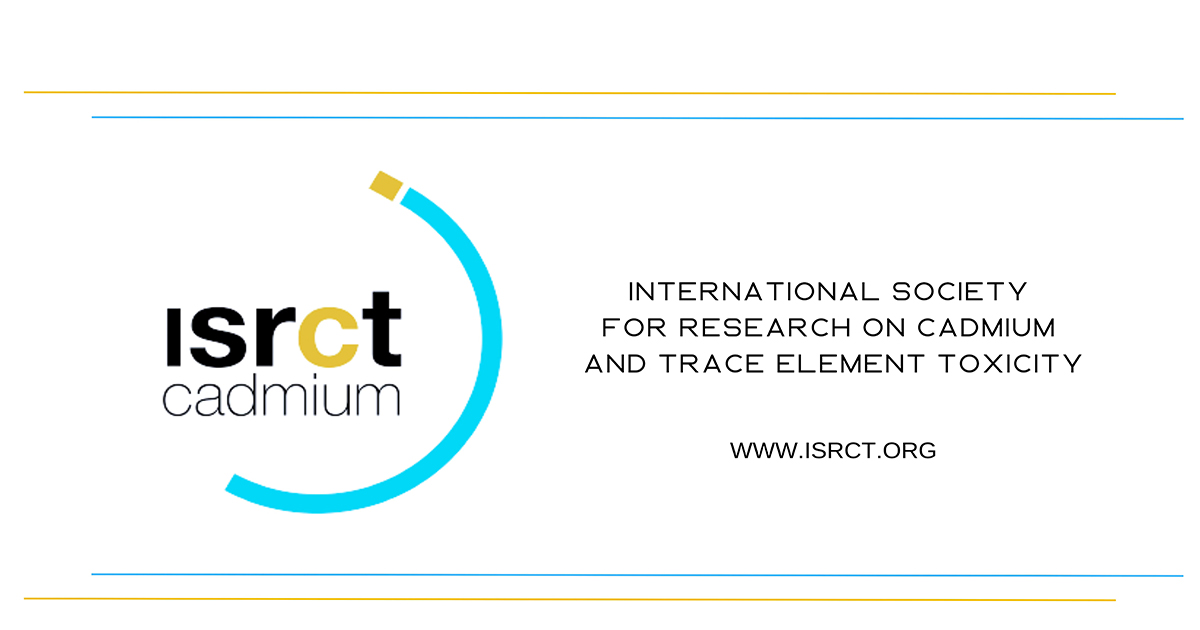Cadmium and Trace Elements Toxicity
A special issue of Toxics (ISSN 2305-6304). This special issue belongs to the section "Metals and Radioactive Substances".
Deadline for manuscript submissions: 31 March 2025 | Viewed by 17037

Special Issue Editors
Interests: trace elements; cadmium; toxicity; neurodegenerative disorders; cancer stem cells; oncology; miRNA
Special Issues, Collections and Topics in MDPI journals
Interests: epidemiology of cadmium toxicity; genetic and nutritional influence of cadmium toxicity outcomes; cadmium toxicity in at-risk subpopulations; novel methods of measuring cadmium in tissues; reverse dosimetry
Special Issues, Collections and Topics in MDPI journals
Interests: animal; physiology; toxicology; cell; factors
Special Issues, Collections and Topics in MDPI journals
Special Issue Information
Dear Colleagues,
Cadmium is considered a highly toxic pollutant, and has spread globally following the rapid development of industries and modern technologies, as a component of television screens, lasers, batteries, paint pigments, cosmetics, etc. Cd is such a toxic redox-inactive metal, even at low doses, that the Agency for Toxic Substances and Disease Registry (ATSDR) has classified it among the seven most dangerous substances for health.
Human exposure to Cd occurs mainly through the respiratory tract, to a lesser extent from the gastrointestinal tract, and rarely through the skin. In humans, Cd exposure causes a broad spectrum of adverse effects, including renal and hepatic dysfunction, pulmonary edema, male and female infertility, osteomalacia, and damage to the adrenal glands and hematopoietic and cardiovascular systems. After exposure, Cd exerts cell toxicity inducing oxidative stress via an indirect mechanism, including the production of reactive oxygen species such as superoxide radicals, hydrogen peroxide, hydroxyl radicals, and nitric oxide.
Current evidence suggests that Cd exposure induces genomic instability through complex and multifactorial mechanisms, the main one of which seems to be the direct interaction of Cd with the DNA repair mechanism, leading to inhibition of DNA repair mechanisms, cell proliferation, and apoptotic inhibition. Furthermore, Cd is implicated in the development of cancer. It has been classified as a type I carcinogen by the International Agency for Research on Cancer, being associated with cancers of the lung, prostate, breast, pancreas and kidney. More recently, it was proposed also a relationship between Cd and neurological disorders.
Interestingly, Cd may interfere with other essential elements and vice versa micronutrient deficiency may exacerbate Cd toxicity. However, whether the differences in the Cd accumulation and Cd-induced health effects are due to different storage of the metal in the human body or they reflect a different sensitivity to its toxic effects remains unclear.
This Special Issue will focus on recent studies on Cadmium and trace elements, and in particular, on elements such as zinc, selenium, and those related to cadmium toxicity. We expect that the topics, both research papers and reviews, will include, but will not be limited to, the most recent approaches to the study of Cadmium and trace elements in humans and in pathologies such as neurodegenerative diseases or diabetes, both in tumors as factors promoting or aggravating the pathology itself, both in agonist and antagonist relationships in drugs, as well as the possible biochemical and biomolecular correlations in the onset of tumors or cardiovascular, renal, and hepatic pathologies.
We also expect topics on the impact of cadmium on animal models, on the correlations with the territory linked to the diet, soil and geology of the same.
Authors are invited and welcome to submit original research papers, reviews, and short communications.
Prof. Dr. Roberto Madeddu
Prof. Dr. Soisungwan Satarug
Prof. Dr. Peter Massányi
Guest Editors
Manuscript Submission Information
Manuscripts should be submitted online at www.mdpi.com by registering and logging in to this website. Once you are registered, click here to go to the submission form. Manuscripts can be submitted until the deadline. All submissions that pass pre-check are peer-reviewed. Accepted papers will be published continuously in the journal (as soon as accepted) and will be listed together on the special issue website. Research articles, review articles as well as short communications are invited. For planned papers, a title and short abstract (about 100 words) can be sent to the Editorial Office for announcement on this website.
Submitted manuscripts should not have been published previously, nor be under consideration for publication elsewhere (except conference proceedings papers). All manuscripts are thoroughly refereed through a single-blind peer-review process. A guide for authors and other relevant information for submission of manuscripts is available on the Instructions for Authors page. Toxics is an international peer-reviewed open access monthly journal published by MDPI.
Please visit the Instructions for Authors page before submitting a manuscript. The Article Processing Charge (APC) for publication in this open access journal is 2600 CHF (Swiss Francs). Submitted papers should be well formatted and use good English. Authors may use MDPI's English editing service prior to publication or during author revisions.
Keywords
- cadmium
- trace elements
- toxicity
- cancer
- environment
- zinc
- selenium
- diet intake
- cadmium biomarkers
- antioxidants
- neurodegenerative disorders
- gemcitabine
- microRna and trace elements
- epidemiology
- diabetes
Benefits of Publishing in a Special Issue
- Ease of navigation: Grouping papers by topic helps scholars navigate broad scope journals more efficiently.
- Greater discoverability: Special Issues support the reach and impact of scientific research. Articles in Special Issues are more discoverable and cited more frequently.
- Expansion of research network: Special Issues facilitate connections among authors, fostering scientific collaborations.
- External promotion: Articles in Special Issues are often promoted through the journal's social media, increasing their visibility.
- e-Book format: Special Issues with more than 10 articles can be published as dedicated e-books, ensuring wide and rapid dissemination.
Further information on MDPI's Special Issue polices can be found here.








